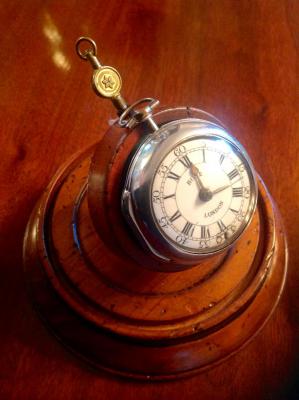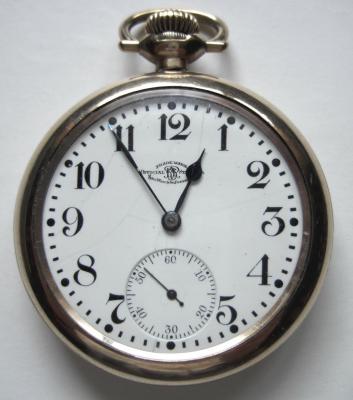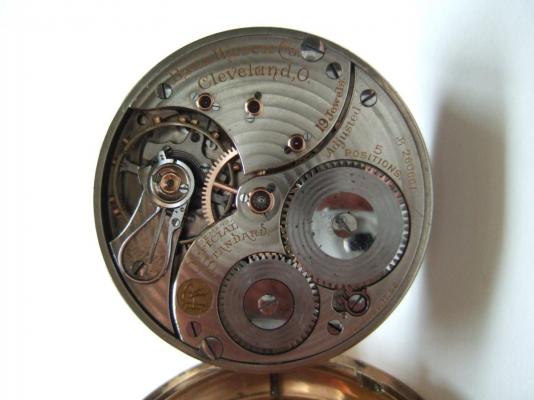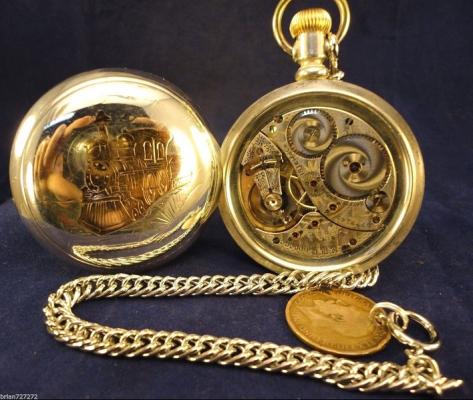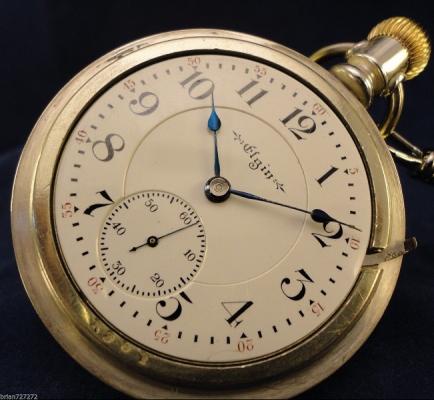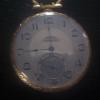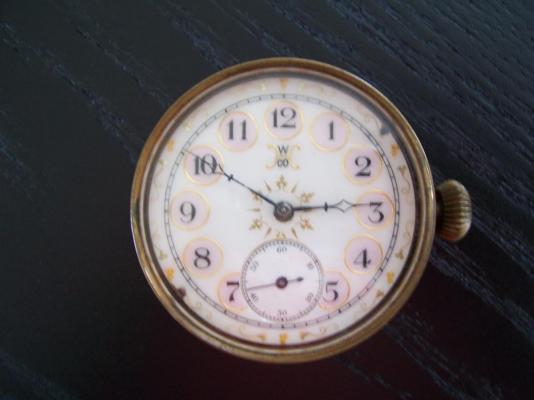Leaderboard
Popular Content
Showing content with the highest reputation on 02/15/16 in all areas
-
3 points
-
Hello Budsy; I'm also new to watch repair and was advised to get some cheap training watches. My goal was to learn as fast as possible on Swizz mechanical movements, so I went after (in my eyes) difficult training material and bought two ETA2540 New Old Stock (N.O.S.) 17.5mm ladies watches. Why? 1) Well, on this forum is a very good "walkthrough" which takes you by the hand and guide you through how to dismantle, clean and assemble them. 2) I went for N.O.S. because they are new and running, so you check your work after you are done. Secondly, the idea is that you repair a watch without leaving scratches behind.....a "ghost repair" so to speak. Since these watches are new, you are the first one to dismantle them, so any scratch, and you know it's yours. 3) I bought two in case I ruined one, so I had "back-up" spare parts. At first attempt to open for oiling, I ruined one leg of a Incabloc spring and during my third assembling (I did multiple "rounds"), I broke a pivot from the pallet. Both valuable lessons of how not to. 4) Since these movements are so tiny, they reveal and expose straight away (and you can practice on) your tool handling skills, quality of your tools, parts handling skills and what you need for doing the job. There is a very good Dutch Seller "Vacheron_nl" on eBay who has these ETA2540 for £7.60 or $11 each, including hour-wheel. To save on postage, you can ask for combined postage. http://www.ebay.co.uk/itm/Tressa-ETA-caliber-2540-N-O-S-Swiss-watch-movement-running-/361474036132?hash=item54298811a4:g:8CQAAOSwFqJWogo- If you rather start gentle with bigger movements and depending on your goal; for the movement of your choice, first find clear information like exploded views, PDF-files or clear walkthrough's. By this you avoid getting stuck at first attempt. Buy running watches and preferable N.O.S. for the reasons given above. These are my "Two cents".........;-)2 points
-
2 points
-
Not at all ash. I don't use this forum as a means to gain business. However, Geo is correct, I have been incredibly busy on the bench taking on more work than usual due to an unexpected loss of earnings in another area. Regretfully, I have quite a few balls in the air currently but I'm hoping things will calm down soon for me lol. Sent from my iPhone using Tapatalk2 points
-
This video shows how to repair the luminous compound on a watch where the old is dis-coloured or broken away. It's a relatively simple job to do if it is done right.Repairing the luminous compound on watch hands is not a very difficult job, but it does require patience and a steady hand. It is important not to apply the new compound too thickly otherwise the hands will catch on each other once the watch is re-assembled. There are two kinds of luminous compound available (and several different colours). Pre-Mixed Provided pre-mixed in a bottle ready for application. Powdered Provided in powdered form. Mix with a binding agent. Which should you use? Well, the pre-mixed compound is quite convenient and allows you to get on with the job faster with less preparation. This can be advantageous should you be in a hurry to get the job complete for a client. However, there is very little flexibility with pre-mixed compound and it can dry in the bottle with time thus going to waste. The powdered compound (which is what I use and recommend) takes a bit more to prepare but it does allow you to create a compound mixture in the consistency (or thickness) you desire. For example - I like to apply the compound very thin and so I usually mix it down accordingly. This makes the compound much easier to apply. Applying the mixture Once you have prepared the hands, as shown in the video, then you can apply the compound with a fine watch oiler or needle. Simply dip the oiler into the mixture. This draws a quantity of compound onto the oiler tip. Now you can apply the compound to the watch hands in a spreading motion and the compound should end up suspended within the gap in the hands. It can take a bit of practice to get this right so when you first start the process you should mix slightly more than you need in case you have to attempt the job more than once. Drying Time Once the compound is applied, you will want to let the hands sit under a dust cover. Depending on the mix, the drying time will vary. I would recommend you should leave them drying overnight to be fully sure. They should not be touched or disturbed whilst they are drying. Re-Assembly When re-assembling the hands onto the watch - make sure there is the normal amount of clearance between the hour, minute and hour hands and that they will not touch each other as they turn. Potential Pitfalls If the hands are seated correctly and the compound is too thick, then this can either rub on the dial (hour hand) or a sub dial's hand may catch the hour hand (on a chronograph for example). Likewise, if the compound on the minute hand is too thick then it will catch on the hour hand. What if I did apply too thick? So it is very important to make sure you do not apply the compound too heavy, but if it is too heavy then I do not recommend trying to scrape it thinner as you could end up with dark and light spots. The best practice would be to start over. Yes - that would be annoying, but you will be much more satisfied knowing you have spent the extra time to make sure the job was done correctly. http://youtu.be/aQUN2A4iHok In summary Three words: Patience, Patience and Patience! You cannot really rush a job like this, but the more you get used to doing it, the more confident you will be. It is not a particularly difficult job, but it can make such a difference to the look of a watch. Enjoy the videos.1 point
-
Thanks to Christian Dannemann (WatchGuy site) for making this original document available. I do not recall seeing it here but apologies if this duplicates a previous posting. Repairing-Omega-self-winding-watches-bumper.pdf Cheers, Vic1 point
-
1 point
-
1 point
-
I've found this for you. http://www.helenarou.com/50-movement-clamp-tab-for-eta-28250282428342836649764987750.html1 point
-
I bought ten from Helenarou last week for exactly the same purpose. They're too long for the 6498 and need to be trimmed down. If you'd like a couple (with screws),free of charge, pm me your address and I'll put them in the post.1 point
-
Cousins have a 1.20 0.165 420 13.5 https://www.cousinsuk.com/category/mainsprings-by-size-watch-pocket1 point
-
1 point
-
1 point
-
Thanks Bob just wondering if Endeavor has spotted the adjustment. If the screw I have arrowed is concentric then that will be it. I have a couple of jobs arrived today (non running french marble clock & non running Seiko Quartz) so I will tackle them first just too get my hand & eye,s back in the groove before the Rolex.1 point
-
I've been scouring the cabinets and various other locations in the house trying to find my dad's old Grimsel watch It was almost identical to this one I found after a net image search: I hate losing stuff! And I'd love to restore this old timer.1 point
-
1 point
-
If you have taken the balance assembly apart, you are in a world of hurt Drini. I really think the best thing you can do is to replace the complete balance assembly by first purchasing another movement. The reassembly of the original balance is more than likely beyond your current skill level. I mean you disrespect.1 point
-
1 point
-
I use one of these Roger. The interchangeable heads are very useful, I always use the beasts head when using stakes. http://www.ebay.co.uk/itm/Watchmakers-Jewellers-Mallet-Hammer-6-Changeable-Heads-Brass-Acrylic-Steel-/151290382773?hash=item23399c09b5:g:c4AAAOSwwbdWNpo01 point
-
I leave them in the wire mesh baskets that I use in the ultrasonic. Same idea as with the cleaning machines. Onwards! DavidS1 point
-
okay with all the search possibilities available today:\ http://www.awco.org/otherhigh/newyork/Springfield/Springfield.htm New York Watch company, 19j, 18S, mfg around 1866, mine has a Hampden dial literally screwed on front which I am proud to say I did not do, I have searched for cases, but was told by more knowledgeable person that the NY movements were not "standard" size 18 and probably would not fit in case without modification. You will note the s/n on awco site is 1022, and from the description, was sort of frankened together, mine is 293, near as I can tell is all original, certainly the pride of the fleet!1 point
-
Gentlemen, Welcome to the LIS and ST-TOS forum from another fan....errr, did I mixed my forums! :D I also have all the episodes...for both and then more: ST-new generation and all the other sequels/spin offs + cartoons, Galactica new and old, Star Wars + cartoons, Stargates everything, you name it I got it. All my money seems to go in two directions, watches and SF movies and books! (SF movies and books = SF*(movies + books) or =(SF*movies + SF*books) = SF*SelectedMedia; count as one although not evident for the wallet...or the wife! Maybe because it looks like a binary tree --- spend on SFmedia --> books, spend on movies; spend on watches --> spend on watch tools, spend on watch parts....no money for wife perfume, settle with flowers! Happy Valentine honey = one single rose!) :) In any case, I think I'm going to get my hands on one of those alarm clocks to start tinkering with actual clocks! My experience is limited to watches! Great lesson learned, both in horology and SF. I love this place! :) Cheers, Bob1 point
-
I have every episode of Lost in Space even the pilot which you may know never had Zachary Smith in.1 point
-
Hi Mark - good to see you here. I guessed you'd been very busy. Sorry to hear your balls are in the air, though. Anything we can do? :startle:1 point
-
These are the 2 oils with the name Synt-A-Lube, I've copied the information from ofrei... Moebius Synt-A-Lube 9010 Moebius Synthetic Oil 9010 has been the standard general purpose oil in the watch industry for decades. Extremely resistant to deterioration, it does not thicken, or clog and it prevents gumming up. MOEBIUS 9010 Synt-A-Lube does not spread, and remains where it is applied for several years. Viscosity of 1.5 stokes at +20 degrees celsius ((viscosity 120 (mm2/sec), provides good lubrication until -29 degrees celsius. Range of temperature: -29 to +70 °C, Viscosity at 20 °C: 150 cSt Pour point: -40 °C, Density at 20 °C: 0,907. Moebius declares the 9010 product in conformity with ROHS and REACH initiatives. The recommend shelf life of this product is 6 years. Moebius Synt-A-Lube 9014 Thinner than 9010, comes in the 2 cc size bottle. Moebius 9014 is a mixure of 70% Moebius 9010 and 30% Moebius 9030, and used for lower temperatures. Viscosity of 0.98 stokes at +20 degrees celsius, provides good lubrication until -35 degrees celsius. The recommend shelf life of this product is 6 years. Maybe they are talking about 9014? In any case, those are the only 2 synt-a-lubes I was able to find. Cheers, Bob1 point
-
Thanks for the info Stuart, funny how there is not much to find on the Net for the actual No.1 Oil apart from the references in PDF's but given that the oils would have been out at the same time as the movements I suppose it would be hard to get a reference point. Here is a pdf from Moebius Sales Dept. It goes a long way towards making a simple soul like me want to pull his hair out but luckily I am baldy already. All of these oils have different Characteristics which they indicate but I, as a tinkerer, will stick with Marks suggestions of about 5 oils and the Molycote DX as nothing has gone radically wrong for me so far. Probably because I am so tight i hardly put any on ! :D Still it is quite interesting - it must have been put out before but here it is to save time. (It is the self winding work that they say Moebius No 1 Chronometer oil or Synt-A-Lube) moebius-specsbook.pdf Cheers, Vic1 point




